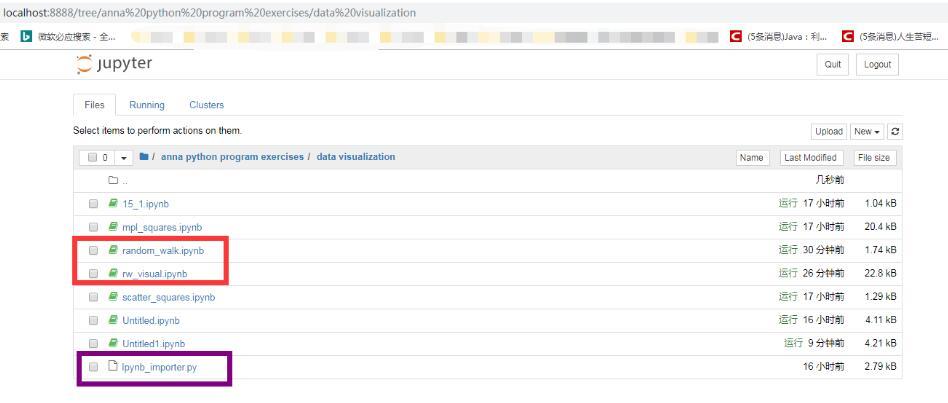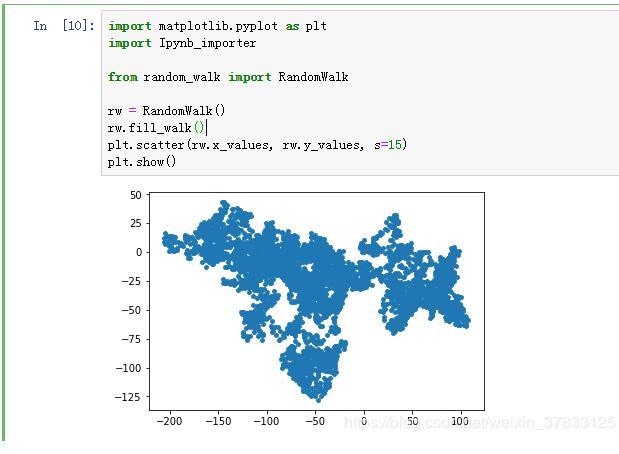1.re.match()
re.match()的概念是从头匹配一个符合规则的字符串,从起始位置开始匹配,匹配成功返回一个对象,未匹配成功返回None。
包含的参数如下:
pattern: 正则模型
string : 要匹配的字符串
falgs : 匹配模式
match() 方法一旦匹配成功,就是一个match object对象,而match object对象有以下方法:
group() 返回被 RE 匹配的字符串
start() 返回匹配开始的位置
end() 返回匹配结束的位置
span()返回一个元组包含匹配 (开始,结束) 的位置
案例:
import re # re.match 返回一个Match Object 对象 # 对象提供了 group() 方法,来获取匹配的结果 result = re.match("hello","hello,world") if result: print(result.group()) else: print("匹配失败!")输出结果:
hello2.re.search()
re.search()函数会在字符串内查找模式匹配,只要找到第一个匹配然后返回,如果字符串没有匹配,则返回None。
格式:re.search(pattern, string, flags=0)
要求:匹配出文章阅读的次数
import re ret = re.search(r"\d+", "阅读次数为 9999") print(ret.group())输出结果:
9999
3.match()和search()的区别:
match()函数只检测RE是不是在string的开始位置匹配,
search()会扫描整个string查找匹配
match()只有在0位置匹配成功的话才有返回,如果不是开始位置匹配成功的话,match()就返回none
举例说明:
import re
print(re.match('super', 'superstition').span())(0, 5)
print(re.match('super','insuperable'))
Noneprint(re.search('super','superstition').span())
(0, 5)
print(re.search('super','insuperable').span())
(2, 7)
补充知识: jupyter notebook_主函数文件如何调用类文件
使用jupyter notebook编写python程序,rw_visual.jpynb是写的主函数,random_walk.jpynb是类(如图)。在主函数中将类实例化后运行会报错,经网络查找解决了问题,缺少Ipynb_importer.py这样一个链接文件。

解决方法:
1、在同一路径下创建名为Ipynb_importer.py的文件:File-->download as-->Python(.py),该文件内容如下:
#!/usr/bin/env python # coding: utf-8 # In[ ]: import io, os,sys,types from IPython import get_ipython from nbformat import read from IPython.core.interactiveshell import InteractiveShell class NotebookFinder(object): """Module finder that locates Jupyter Notebooks""" def __init__(self): self.loaders = {} def find_module(self, fullname, path=None): nb_path = find_notebook(fullname, path) if not nb_path: return key = path if path: # lists aren't hashable key = os.path.sep.join(path) if key not in self.loaders: self.loaders[key] = NotebookLoader(path) return self.loaders[key] def find_notebook(fullname, path=None): """find a notebook, given its fully qualified name and an optional path This turns "foo.bar" into "foo/bar.ipynb" and tries turning "Foo_Bar" into "Foo Bar" if Foo_Bar does not exist. """ name = fullname.rsplit('.', 1)[-1] if not path: path = [''] for d in path: nb_path = os.path.join(d, name + ".ipynb") if os.path.isfile(nb_path): return nb_path # let import Notebook_Name find "Notebook Name.ipynb" nb_path = nb_path.replace("_", " ") if os.path.isfile(nb_path): return nb_path class NotebookLoader(object): """Module Loader for Jupyter Notebooks""" def __init__(self, path=None): self.shell = InteractiveShell.instance() self.path = path def load_module(self, fullname): """import a notebook as a module""" path = find_notebook(fullname, self.path) print ("importing Jupyter notebook from %s" % path) # load the notebook object with io.open(path, 'r', encoding='utf-8') as f: nb = read(f, 4) # create the module and add it to sys.modules # if name in sys.modules: # return sys.modules[name] mod = types.ModuleType(fullname) mod.__file__ = path mod.__loader__ = self mod.__dict__['get_ipython'] = get_ipython sys.modules[fullname] = mod # extra work to ensure that magics that would affect the user_ns # actually affect the notebook module's ns save_user_ns = self.shell.user_ns self.shell.user_ns = mod.__dict__ try: for cell in nb.cells: if cell.cell_type == 'code': # transform the input to executable Python code = self.shell.input_transformer_manager.transform_cell(cell.source) # run the code in themodule exec(code, mod.__dict__) finally: self.shell.user_ns = save_user_ns return mod sys.meta_path.append(NotebookFinder())2、在主函数中import Ipynb_importer
import matplotlib.pyplot as plt import Ipynb_importer from random_walk import RandomWalk rw = RandomWalk() rw.fill_walk() plt.scatter(rw.x_values, rw.y_values, s=15) plt.show()3、运行主函数,调用成功
ps:random_walk.jpynb文件内容如下:
from random import choice class RandomWalk(): def __init__(self, num_points=5000): self.num_points = num_points self.x_values = [0] self.y_values = [0] def fill_walk(self): while len(self.x_values) < self.num_points: x_direction = choice([1,-1]) x_distance = choice([0,1,2,3,4]) x_step = x_direction * x_distance y_direction = choice([1,-1]) y_distance = choice([0,1,2,3,4]) y_step = y_direction * y_distance if x_step == 0 and y_step == 0: continue next_x = self.x_values[-1] + x_step next_y = self.y_values[-1] + y_step self.x_values.append(next_x) self.y_values.append(next_y)运行结果:

以上这篇浅谈Python中re.match()和re.search()的使用及区别就是小编分享给大家的全部内容了,希望能给大家一个参考,也希望大家多多支持python博客。
-
<< 上一篇 下一篇 >>
标签:matplotlib
浅谈Python中re.match()和re.search()的使用及区别
看: 1368次 时间:2020-07-20 分类 : python爬虫
- 相关文章
- 2021-07-20Python爬虫基础之爬虫的分类知识总结
- 2021-07-20Python爬虫基础讲解之请求
- 2021-07-20PyQt5爬取12306车票信息程序的实现
- 2021-07-20Python爬虫之m3u8文件里提取小视频的正确姿势
- 2021-07-20如何用python抓取B站数据
- 2021-07-20快速搭建python爬虫管理平台
- 2021-07-20Python爬虫之获取心知天气API实时天气数据并弹窗提醒
- 2021-07-20Python爬虫之批量下载喜马拉雅音频
- 2021-07-20python使用pywinauto驱动微信客户端实现公众号爬虫
- 2021-07-20Requests什么的通通爬不了的Python超强反爬虫方案!
-
搜索
-
-
推荐资源
-
Powered By python教程网 鲁ICP备18013710号
python博客 - 小白学python最友好的网站!